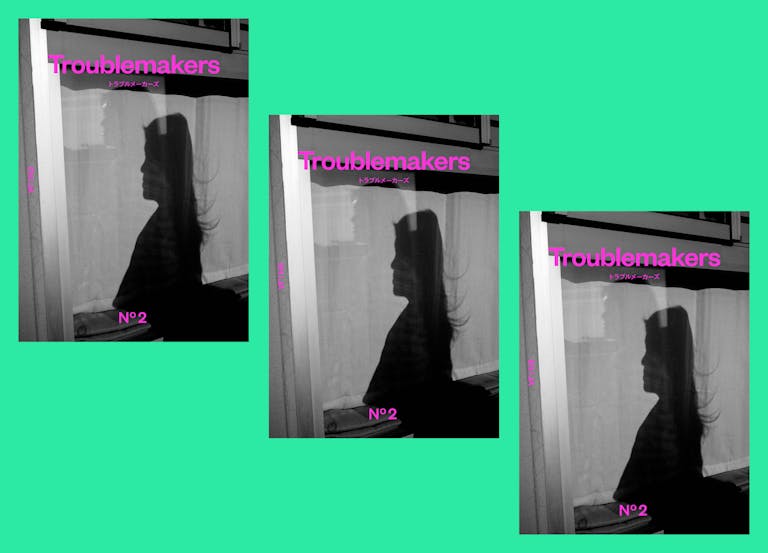Talking to Adbusters about revolution

The Stack America year got off to a fantastic start, featuring two publications along with one of our finest Designers Series prints to date.
One of the two was the latest issue of Adbusters, the Vancouver-based counterculture magazine that’s been pricking consciences for the last 22 years.
Still fiercely independent, with a design and theme that changes every issue, we spoke to Twyla Smith about how they keep things editorially fresh, and where the next media battleground might be.
Adbusters began in 1989. How have our culture, and the message of the magazine, changed in that time?
Our culture, and the message of Adbusters Magazine have both changed a lot since our first issue in 1989.
Back in that time, spoofing advertisements and calling out corporations was radical. People have become much more receptive to criticism of advertising, and advertisers have found ways to absorb that criticism and grow stronger from it.
Over the years, we’ve also widened our scope. While we still cover the same areas the magazine was founded on such as advertising, media democracy and corporate crime, we’ve grown as our culture has grown, examining how digital technologies affect our lives, and how geopolitical issues like Israel/Palestine affect the world.
We’ve also come to believe that the need for drastic change is much more dire, leading to our emphasis on revolution in the last couple of issues.
What, if anything, remains the same from the founding message?
We still believe that advertising and corporate concentration are extremely negative forces in our lives. And we still believe that sometimes one “AHA” moment is all it takes…
You don’t include certain “traditional” magazine tropes, such as cover lines, page numbers, standard contents pages. Why is that?
Our readers are smart, they don’t need to be told what page they’re on, or what’s coming up.
Reading through an issue of Adbusters is like a conceptual and emotional journey, and page numbers, decks and heads disrupt the flow and compartmentalize the content.
Flow is paramount in the experience of reading Adbusters. And we break the number one rule of magazines–advertising–so why bother with the rest?
The magazine is often cited as a resource for art directors and designers. Was that always the intention?
No, it wasn’t. In his 2006 book Design Anarchy, Editor-in-Chief Kalle Lasn explains that in the first eight years, Adbusters really didn’t shine, despite all its anger and passion.
But when Chris Dixon signed on as art director around 1997, he breathed life into the design side of the magazine. Then, in 2000, we published the First things First 2000 Manifesto, signed by prominent designers such as Jonathan Barnbrook, Tibor Kalman and Ellen Lupton.
It called out designers across the world for selling out their creative vision. It called for designers to use their skills to be put to worthwhile use, and to have meaning. That sent a prick through the design world and since then we’ve really tried to push the envelope on design in the magazine.
Occasional collaborator Pedro Inoue stepped up recently as Creative Director. How has the look/feel of the magazine changed since he became involved?
Pedro has been an incredible contributor to Adbusters. Pedro has been designing our covers for years, but beginning with issue #91, he’s played a much larger part and has injected a lot of energy into the art department.
Your recent Kick It Over issue was aimed squarely at economics students, to try and revamp the curriculums of economics courses around the world in the light of recent events. You also created a campaign and website to disseminate the information. Do you plan more of these kinds of multi-channel campaigns?
We think Kick It Over is an extremely important campaign. Maybe even the most important if change is going to happen to in our lifetime.
We’re currently working on a plan to revitalize the site and get some updated content on there. Aside from that we’re really energized by smaller campaigns such as this week’s #HUFFPUFF, calling for people to abandon the Huffington Post and share their favourite indie news sites.
Why is a print magazine still an effective tool to get your message out?
We think that reading a print magazine offers a totally different experience than anything else. It allows you to slow down and think about what you’re reading, and as I mentioned before, the flow of the magazine is really important.
The combination and sometimes juxtaposition of art, design and editorial can be shocking and revealing in ways that reading articles online can’t be.
Where next for Adbusters?
Good question! You tell us. We’re currently looking for a staff writer, and we’re always looking for art and writing submissions. Let us know at editor@adbusters.org and artdirector@adbusters.org what issues need to be covered and what’s hot in the design world!






